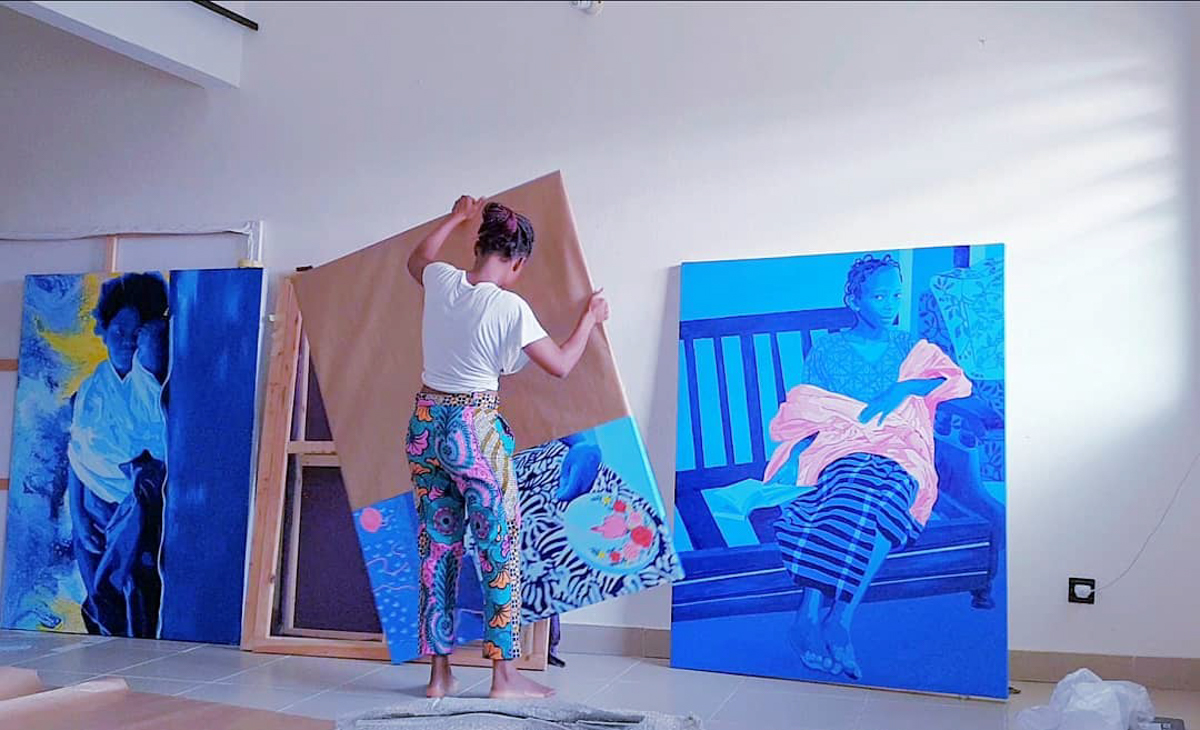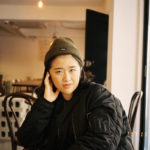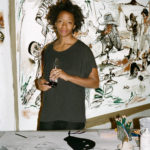The British chapter was first proposed by Ghanaian analyst Akyaaba Addai-Sebo in 1987 and has…
Moufouli Bello
Interview with the Benin-based artist7 July 2020
Moufouli Bello (@Moufouli.B) is a multimedia and visual artist located in Benin, West Africa, with an interest in how structures such as traditions, culture, politics, and technology influence how we develop our perceptions of society, our emotions and build a sense of unity.
As well as an artist using a variety of mediums such as paint, animation, and installations, Moufouli also has a masters degree in International Labor Law, and experience within the legal, photography, writing, visual arts, and journalism industries.
Samira Ghoulmia, a writer and artworker based in Berlin, speaks to Moufolio about the meanings behind her artwork, the intersection of art and politics, and the responsibility that comes with being a female artist with visibility within the arts community.
The usage of the colour blue is one of the essential characteristics of your paintings, especially in regards to the subject of Black African women who are still underrepresented in the arts. What is the relation between black skin and the colour blue embodied on canvas in your paintings? How did you come to work with this idea?
Moufouli: Firstly, it’s a choice dictated by comfort because it’s practically the only colour that my eyes and my senses don’t find aggressive, and it’s also a colour that’s connected with positive emotions for me.
I come from the Yoruba ethnic group who tint their fabrics in this colour based on an indigo plant named Èlú. The memory of my emotions brings me back to that colour, which, for me, is associated with benevolence, security and home. Basically, the total freedom to be and to exist.
My paintings are interested in the representation of the black woman and her visibility. There are as many colours of Black skin as Black people, and the blue allows me to gather all its nuances since the deepest Black skin colour is almost blue.
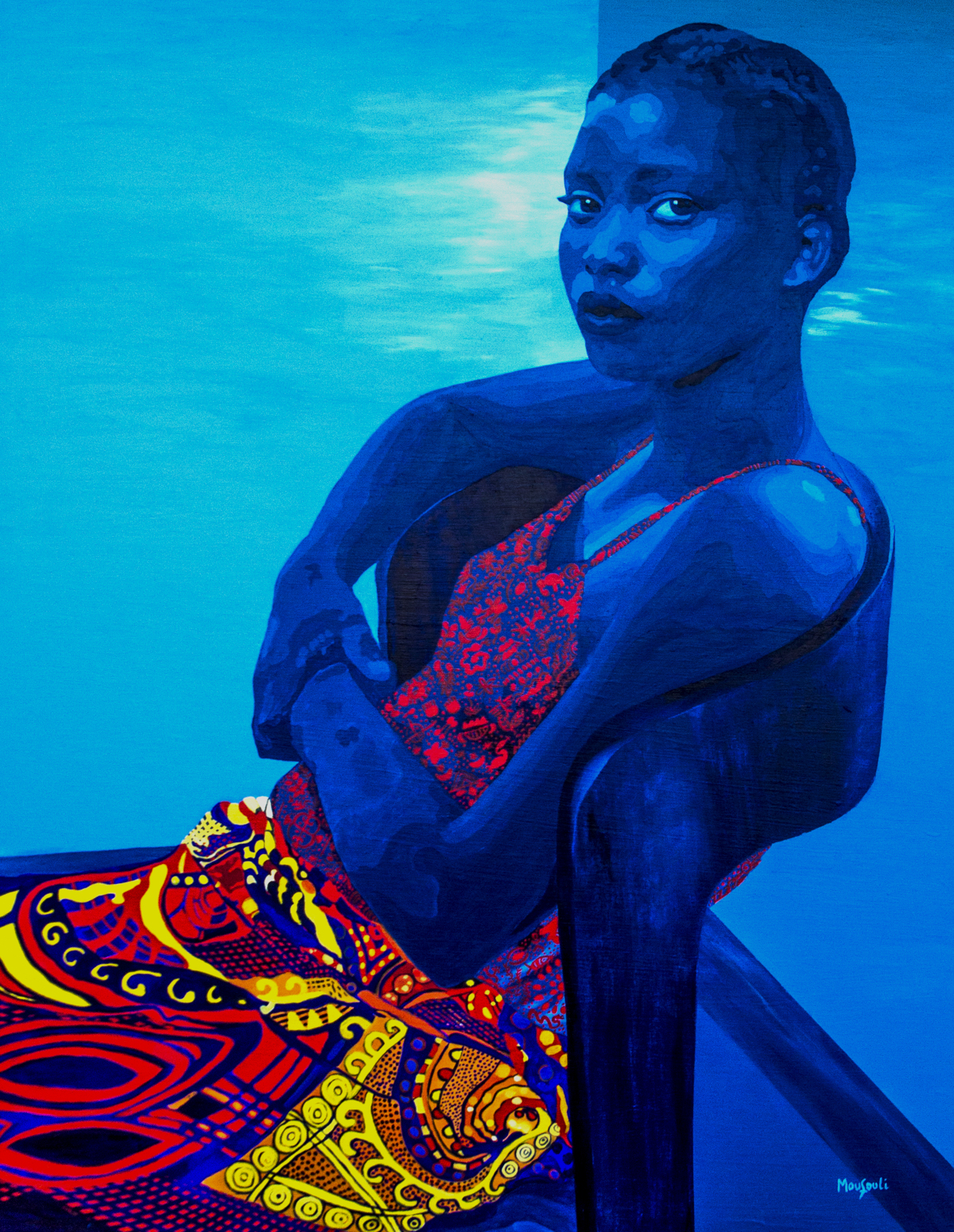
The way BIPOC womxn have been depicted in art history is mostly in that of an objectifying manner. One thing that struck me was that the womxn in your paintings look back. An objectifying gaze upon them is mirrored with their strong self-articulation and a reclaiming of autonomy and authority, and from this, your work becomes political. How do you view the relationship between arts and politics? Do you see a special responsibility for you as a female artist from Benin?
Moufouli: On the social, political, cultural, and other levels, there are not many womxn who reach the elite spheres of their discipline. They exist but they are rare. And even in those cases, society tries to take away the recognition of their work, because many think that their success is a result of help afforded to them by a male figure and that they could not do this alone. Or sometimes, some men who were collaborators, come to solely own the success of their joint work.
This situation is explained by the status of the womxn, who, for the most part, remains frozen in the role of the housewife, the cook, and the foster mother who has no other ambition than to exist for the others; never as an entity complete with a voice. In Benin, many womxn are administrative executives and hold high positions of responsibility, but each time they have to prove that they are competent just because they are womxn. Their abilities would never be questioned if they were men.
We live in a clearly patriarchal world. The art I try to practice wants to start discussions on taboos and fixed topics that society considers untouchable due to a “traditional” codification that justifies all the injustices, the gender-based inequalities and oppression.
My intention in doing a work on this body language [of looking back] is to hold the gaze of the viewer. [In my art] I would like people who meet the eyes of these women to see them, so that women see themselves as well. Whether that be in situations of full power and consciousness, in situations of control, and as leaders.
That’s why they (the women in Moufouli’s art) watch you, make you look, and have a certain presence. We live in a society where the woman is invisible and gagged. Nobody asks her for her opinion, as everyone always knows better than the female figure what is good for her.
It can go as far as negating her humanity in certain cases and the integrity of her body. I would like us all to know that we have the choice to have a choice. That we are not born to help others exist by denying our own existence.
One of my favourite paintings that you created is called “Adjokè Worries”. Who is Adjokè and what does she worry about?
Moufouli: Adjokè is the niece of my cousin who I watched grow up. Her child’s body has turned into a womxn’s gradually, which has the consequence that it is noticed by men. Her aunt, who my cousin lives with, does not have complete confidence in her ability to say ‘no’, and she is afraid that she will become pregnant too early, which creates tension.
We decided to give her a sex education class so that she would be informed. We taught her that her body belongs to her, that she should not to be pressured to have sex, and that she has the choice to decide what to do [with her body].
And we especially [want her to know] that this has consequences on her body and certainly on her future. Adjokè worries because all of this falls on her without warning, she’s still a child in her head and she doesn’t understand the worries of her aunt, and the new interest of men. But we’re discussing it, and she’s becoming progressively informed and educated about these issues so that she won’t make mistakes or be manipulated. Her aunt wants her to understand that she’s not ready at her age for relationships, and that anyone who tells her otherwise certainly wants her only as property.

There is another portrait of Adjokè titled “ADJOKE DON’T CARE”. She seems to have fallen asleep while stitching a middle finger that is surrounded by embroidered flowers.The needle work is a practice connected to traditional patriarchal ideas of the domestic role of womxn. I love the fact that she’s sleeping, maybe even dreaming; which shows the viewer that she is within herself, and that she is escaping a consuming gaze that might expect something of her. What has changed that Adjokè doesn’t care (anymore) about those socio-cultural patriarchal expectations on women?
Moufouli: In this case, I used Adjokè as a model to tell the story of a gxrl who decided to break the rules. It’s often said that a womxn must smile, be kind, know how to cook, know how to knit, know how to embroider and many other things just because she is a gxrl. I can say that this character doesn’t care anymore [about these expectations], because she decided that she would do what is good for her; no matter what society thinks a gxrl should do. This character now knows that she has a voice, that she has a choice; and she embroidered a nice middle finger to those who want to reduce her to a stereotypical role.
You’re one of the few female artists to have visibility in Benin. Do you think this affects your work? How? What is your connection to and involvement in the local art scene?
Moufouli: I don’t think that many people know my work in West Africa because the art scene isn’t very developed in comparison to Nigeria or South Africa.
There are many femxle artists but they have gradually been abandoned. However, there are also new ones who are motivated. I would say that I am one of those who doesn’t give up, and so I’ve done some exhibitions and residencies in Benin in art galleries and centers.
The clothes the womxn wear in your paintings depict traditional West African textile designs. How is the culture and tradition of Benin reflected in your work? What is the story being told in relation to the textile prints and the womxn represented? What stories are told in the designs?
Moufouli: I was inspired by Adirè fabric. It’s a traditional Yoruba loincloth, containing writings that tell the story of the community. I took the process of this loincloth and I dressed my characters with fabrics that tell their stories and their hopes using traditional signs and other modern inventions.
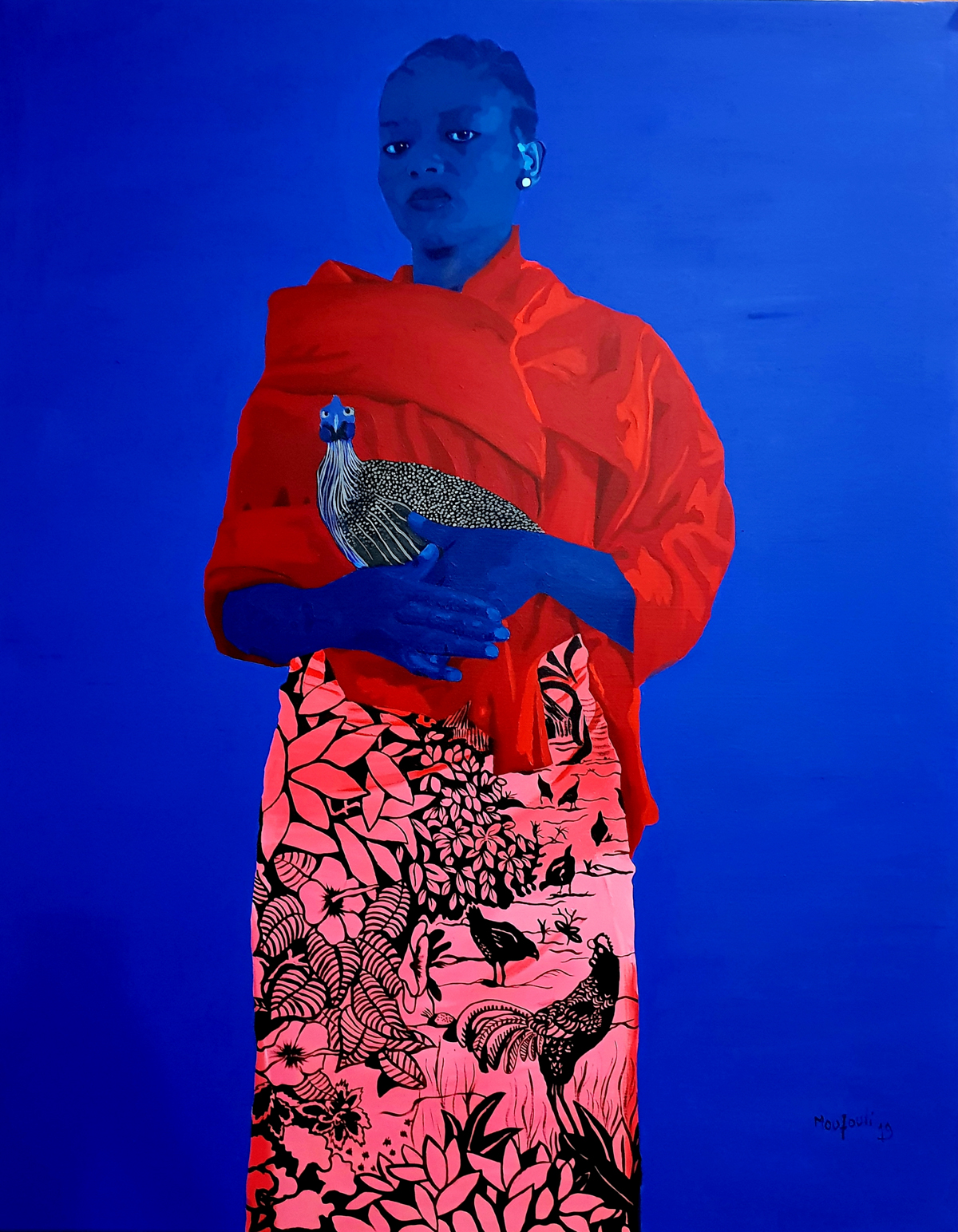
And what is next for you? Do you have any upcoming exhibitions or shows?
I was preparing some exhibitions which have been postponed because of Covid-19, but in the meantime, the next step for me is to develop my digital work as a more effective way of getting into The Fresnoy, an International School of Digital Art and Cinema (located in Tourcoing, France).I would also like to engage with galleries that host exhibitions with talks and conferences in order to discuss the experiences of women and intersectional feminism, or find another way to do it.
These projects are/will be sensory and cognitive experiences established according to a procedure of indirect impact, built around empathy. That is to say, I’m creating works that question our senses, influence the mind, and appeal to our ability to identify ourselves. These are works in which art questions reality and the immutability of our perception of reality, as well as [questioning] societies and their modes of operation.
The best outcome would be an upset and questioning of society’s workings, and a worst case scenario would be that a conversation will at least be started, and that’s the first step towards change.
_
Original artwork and photographs provided by Moufouli Bello. Follow Moufouli on Instagram to keep up with her work. For more Art & Culture, click here.



